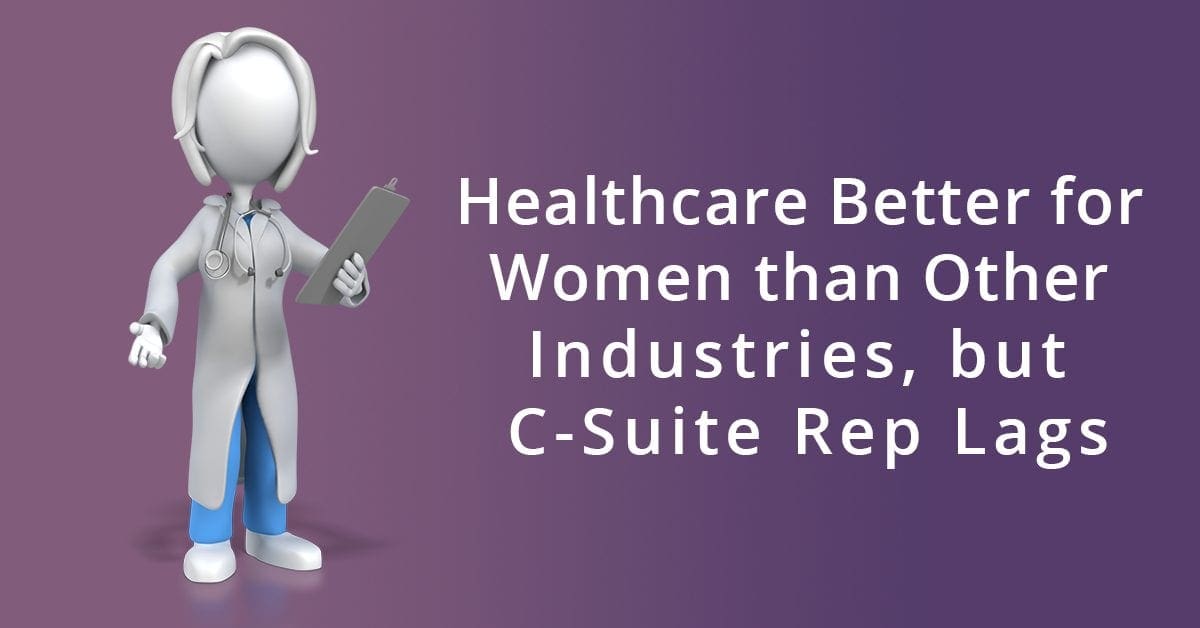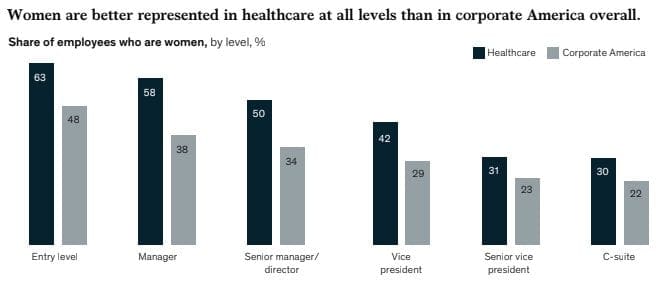Call us toll-free: 800-878-7828 — Monday - Friday — 8AM - 5PM EST


By Rebecca Pifer for Healthcare Dive
Dive Brief:
- Healthcare has less gender disparity than other U.S. industries, but still has room for improvement at executive levels.
- A new McKinsey report found healthcare is one of the best industries for working women in several dimensions. Women are better represented at all levels than in other sectors, are promoted at similar rates as men and report generally high career satisfaction.
- However, the proportion of women in business decreases as the responsibility of the job increases. More than 60% of entry-level healthcare jobs are filled by women, but only 30% of C-suite roles.
Dive Insight:
There’s a large body of research showing women and men are rarely equal in the workplace, especially when at the highest rungs of the professional ladder.
Despite the fact that women make 80% of buying and usage decisions in healthcare, and that women make up more than 60% of the overall healthcare workforce, industries across the country aren’t rushing to achieve gender parity, according to the McKinsey report.
Along with having less representation at the highest echelons of industry, women get paid less than men across the country. Healthcare is no different.
By some estimates, the physician pay gap has narrowed a bit in recent years. But male physicians earn an average of $1.25 for every $1 female physicians earn, according to clinician network Doximity. That’s $90,500 over a year.
Although the rate of female promotions in healthcare is generally equal to male promotions, which is stronger than most other industries, women are much less likely to be represented in the C-suite. Only 26% of these leadership positions are filled by white women due to the “glass ceiling that seems to exist between senior manager/director and VP levels,” according to the report.
These statistics are more stark when narrowed down to the experience of women of color. Only 22% hold entry-level jobs in healthcare and a mere 4% work at the C-suite level.
According to an Oliver Wyman report from earlier this year, women make up only 13% of healthcare CEOs.
McKinsey identified three main challenges contributing to this decline: structural challenges like hiring and advancement practices, institutional barriers that allow existing biases to remain intact and the impact of the daily work environment not fostering an inclusive, supportive experience for all employees.
These factors contribute to women in senior leadership positions being nine times more likely than men to be the only person of their gender in the room. As a result, they’re more likely to consider leaving their jobs.
However, there are solutions. Along with reframing gender equity as a priority in the workplace, McKinsey highlighted three core actions that can increase diversity, including ensuring promotions and hiring processes are fair, investing in diversity and inclusion training and offering flexible work arrangements.
A group of doctors, nurses and medical students joined to form Time’s Up Healthcare in March, an affiliate of the larger Time’s Up initiative that launched last year. The group’s mission, to combat gender bias and sexual harassment in the industry, is supported by giants like Mayo Clinic, Brigham Health, the University of Wisconsin and Yale.
Yet women remain pessimistic about the future. A majority expect it will take at least a quarter of a century to reach full workplace equality.

